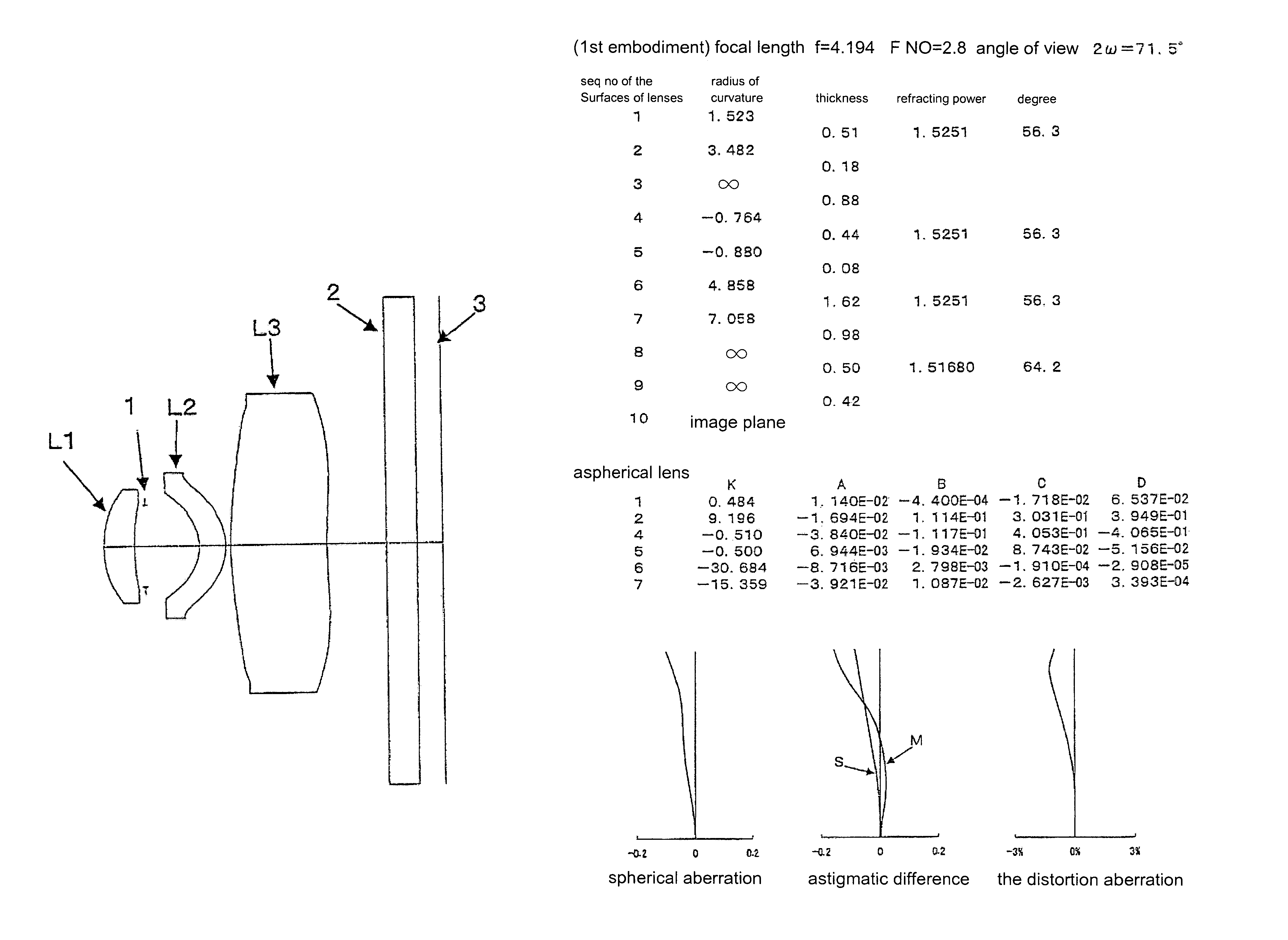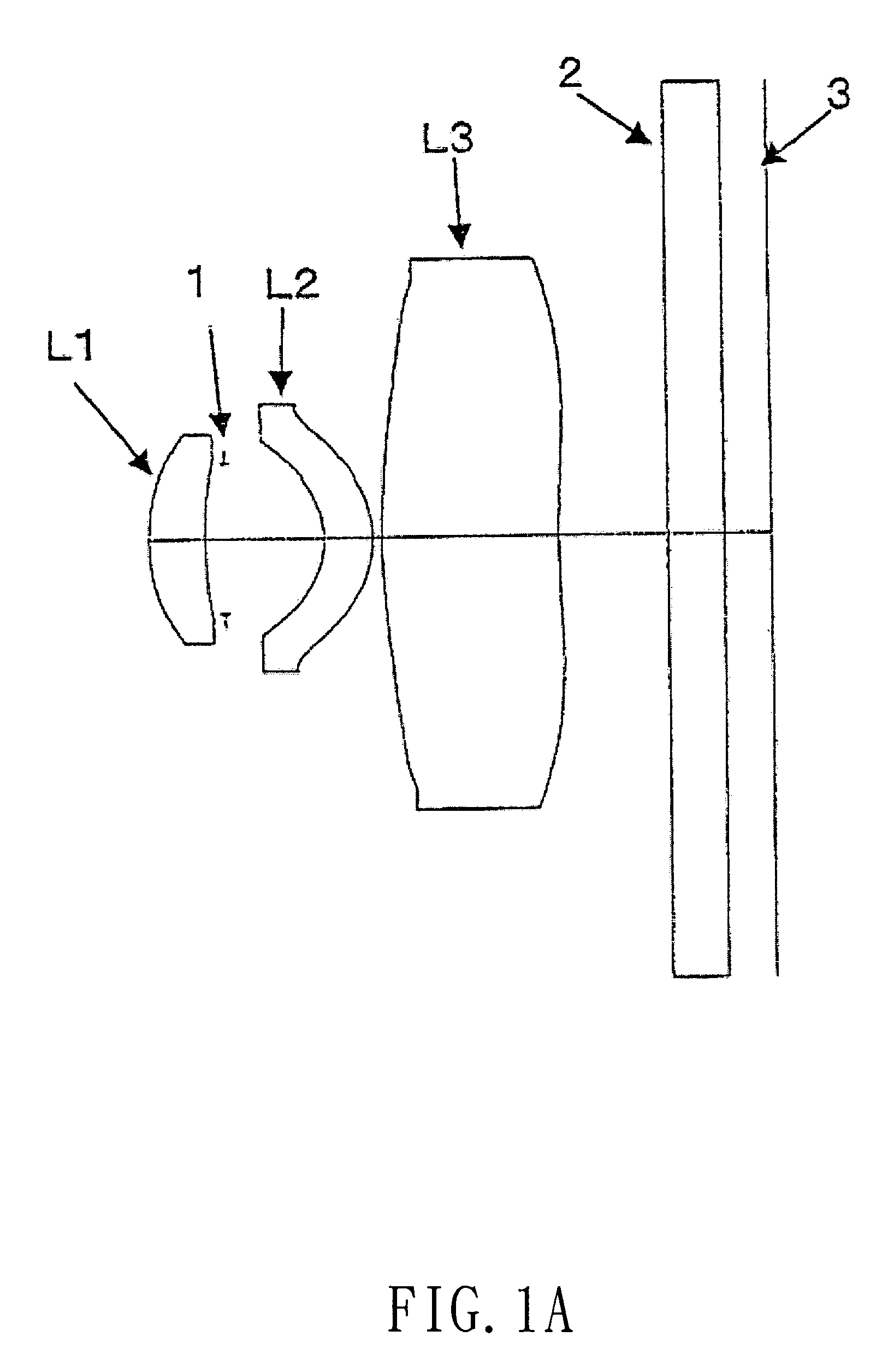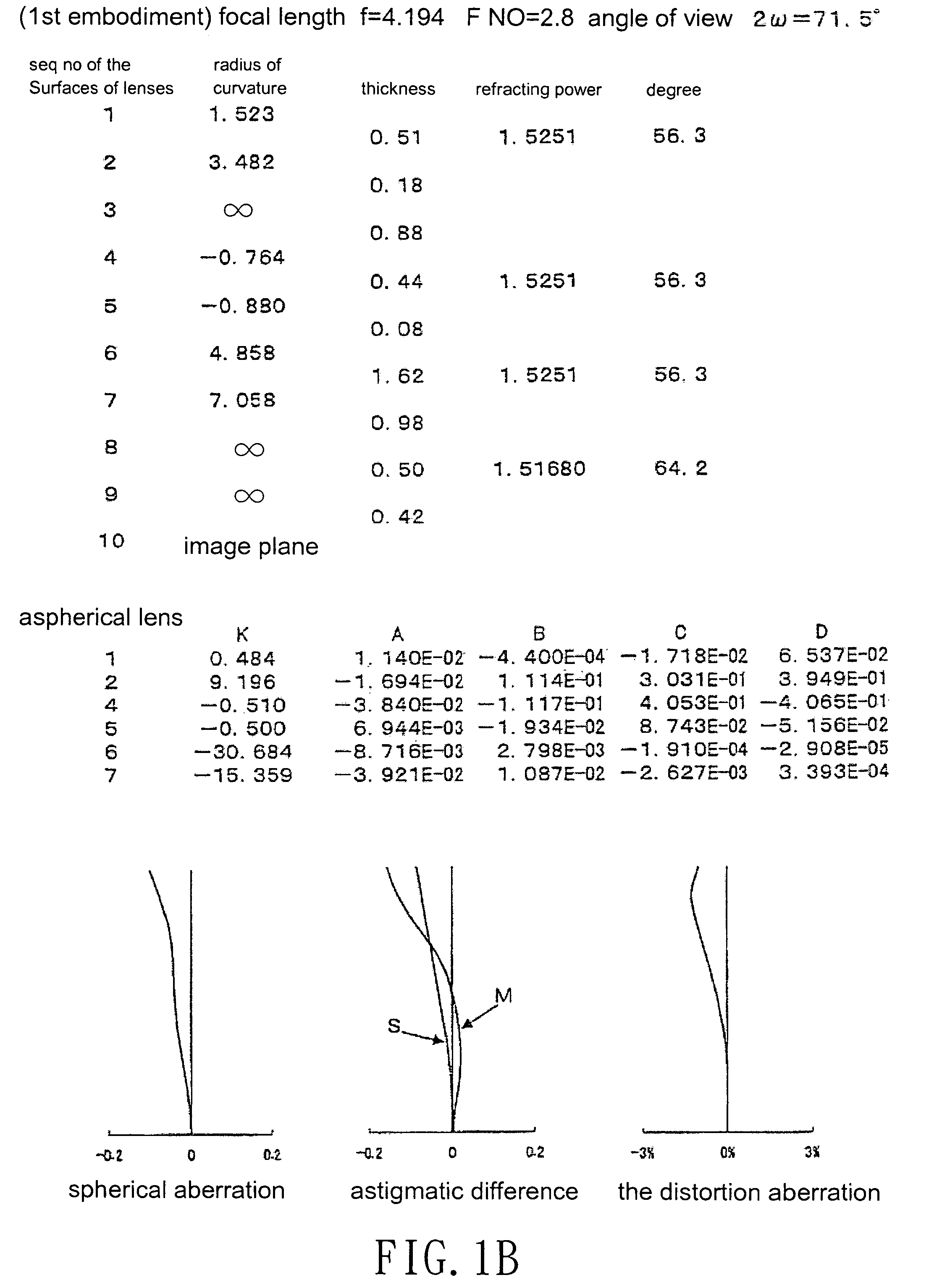Image lens array
- Summary
- Abstract
- Description
- Claims
- Application Information
AI Technical Summary
Benefits of technology
Problems solved by technology
Method used
Image
Examples
Embodiment Construction
[0038]Referring to FIGS. 1–7, which show different image lens arrays in accordance with seven embodiments of the present invention, FIGS. 1a–7a show the configuration of the lens arrays, and FIGS. 1b–7b show the optical characteristic data of the lens arrays. The image-taking lens array in accordance with the present invention is particularly suitable for use as a built-in optical system for a cell phone.
[0039]The image lens array, from the object side, comprises a first lens L1, an aperture 1, a second lens L2, a third lens L3, a parallel glass 2 and an image-forming plane 3.
[0040]The first lens L1 is a positive meniscus lens with positive refractive power and has a convex surface facing the object side, the second lens L2 is positive meniscus lens with positive refractive power and has a convex surface facing the image side, and the third lens L3 is a positive meniscus lens with positive refractive power and has a convex surface facing the object side. The first and second lenses ...
PUM
 Login to View More
Login to View More Abstract
Description
Claims
Application Information
 Login to View More
Login to View More - R&D
- Intellectual Property
- Life Sciences
- Materials
- Tech Scout
- Unparalleled Data Quality
- Higher Quality Content
- 60% Fewer Hallucinations
Browse by: Latest US Patents, China's latest patents, Technical Efficacy Thesaurus, Application Domain, Technology Topic, Popular Technical Reports.
© 2025 PatSnap. All rights reserved.Legal|Privacy policy|Modern Slavery Act Transparency Statement|Sitemap|About US| Contact US: help@patsnap.com



